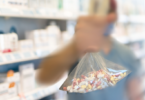This week is National Blood Donor Week in Canada.
Despite this acknowledgement, Canadian Blood Services says blood inventory has declined by 25 per cent in the past two months, with the past few weeks seeing a shortage of O negative and B negative red blood cells.
What’s causing this shortage and why are we having trouble fixing it? Dr. Akash Gupta, a transfusion medicine specialist at Sunnybrook, helps us understand.
Why is the demand for blood so high right now?
Even in regular times, most of our blood collections in Canada are from a small minority of dedicated people. Only about 4 per cent of people go out to donate, despite the fact that one in two people are eligible.
Then with the pandemic, especially at the start of the pandemic, everyone was required to stay home and isolate. So, a lot of the regular donors didn’t come out to donate as often, just out of following the rules and for safety. So that has had an impact. Contrarily now, with limitations being lifted, a lot more people are travelling. But Health Canada has set rules based on COVID, preventing many international travellers from donating.
In short, our donor base is down.
And then as everything opens up from the hospital side, the demand for blood has gone up as we’re doing more surgeries. Plus, trauma season officially started with the May long weekend. So, demand has gone up even further, but the donor base hasn’t gone back to where it was. Thus, we have a deficit.
Does having COVID impact one’s ability to donate blood?
COVID itself is not transmissible by blood. So, there’s no risk to blood products.
Though, if you are symptomatic or actively infected with COVID, then you can’t donate blood. But that’s more for protection of staff and other donors in the clinic so you don’t transmit the disease to them.
Why else might someone be ineligible to donate?
Along with travel, low hemoglobin is the biggest deferral.
A lot of young women are iron deficient to begin with because of their monthly menstrual periods, so low hemoglobin is quite common.
If you have low hemoglobin, then you’ve been identified as having anemia, so it’s probably a good idea to see your family doctor. If you’re anemic, that can be treated. It might be as simple as taking oral iron or maybe IV iron. Then you can boost up your hemoglobin and try again once that’s been rectified.
Even aside from donation, if you’re anemic, you would probably benefit from your hemoglobin being bumped up to the normal range anyway.
What should people know before they donate blood?
Donating is generally pretty painless and pretty quick.
To determine if you’re eligible to donate, now you can do the screening online, so you don’t have to go into the clinic to find out. If you answer yes to any of the high-risk questions, it won’t let you book the appointment, so you don’t have to go in and then be turned away at the clinic itself. And now everything is by appointment because of COVID, so it’s a little more streamlined that way too.
The donation itself is less than 10 minutes. And then you get some nice treats.
Anything you’d like to add?
If people go out to donate, they can save lives.
Blood transfusion is a very common procedure in hospitals; I’m sure most people know someone who’s required a blood transfusion. And it’s often a life-saving process.
So, please go out and donate. That would be very helpful.








